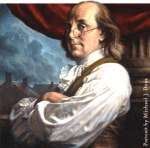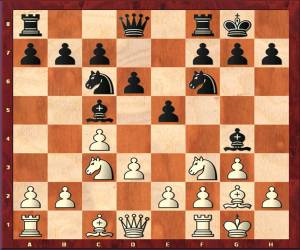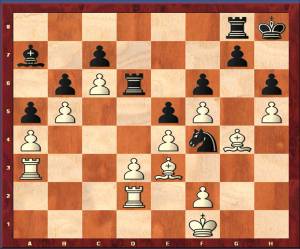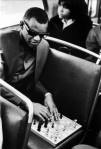In this second article regarding celebrity chess players, we will focus on Ben Franklin, Sting and Ray Charles.
Ben Franklin
 There is no doubt that Benjamin Frankin is the most famous “Renaissance Man” in American history. Even though he only went to school until he was 10 years old, throughout his life he took pride in having a voracious appetite for learning and coming up with new ideas.
There is no doubt that Benjamin Frankin is the most famous “Renaissance Man” in American history. Even though he only went to school until he was 10 years old, throughout his life he took pride in having a voracious appetite for learning and coming up with new ideas.
As noted in his Wikipedia article, he was an author, printer, scientist, politician and inventor. His many achievements include the formation of the first public library back in 1731, the invention of bifocals, and formed the first fire department in Pennsylvania.
Born on January 17th, 1706 – he was the 15th child (out of 17!) and youngest male in the family. As he grew into adulthood, he became interested in chess and was known to be an active player by 1733.
Unfortunately, no known transcripts of his games exist, but there is a record of an article “The Morals of Chess” published in the Columbian Magazine in December 1786. In the article Franklin points out the many positive lessons that can be learned from chess such as calculation, planning, and caution – as we have all learned that hasty moves are often swiftly punished!
The article also scopes out a code of conduct, not unlike what is required at most USCF tournaments. The main tenets are to respect your opponent and to focus on playing the game to the best of yoru ability.
The following link contains the full article: Link
(note: for some reason if the above link doesn’t work, try pasting the following in your browser …
http://www.goddesschess.com/chesstories/franklin.html
Sting
A modern day punk rock /new wave icon, Sting has also fostered many interests outsid e of the world of music over the years.
e of the world of music over the years.
Interestingly enough, he has played many games with Garry Kasparov over the years. It turns out that he initially met him through a mutual friend. Sting used to live next to Kasparov’s lawyer and was eventually introduced.
The transcript featured in this article comes from a simul of Kasparov vs. Sting and his bandmates from 2000 (not the Police).
The interesting thing to note from this game is that Sting does fine in the initial phase of the game, but never figures out what to do with his dark squared bishop. He moves the bishop four times in the initial 15 moves of the game and it eventually becomes imprisoned behind its own pawns.
 The above position was reached after:
The above position was reached after:
1. g3 Nf6 2. Bg2 e5 3. d3 Bc5 4. Nf3 d6 5. 0-0 0-0 6. c4 Nc6 7. Nc3 Bg4.
The game continued – note how Kasparov continues to improve his position and gain more and more space until Sting has no place to move his pieces:
8. h3 Bxf3 9. Bxf3 Qd7 10. Bg2 a6 11. e3 Bb4 12. Ne2 Rae8 13. a3 Bc5 14. Qc2 Re7 15. b4 Ba7 16. Nc3 Rfe8 17. Bd2 d5 18. cxd5 Nd8 19. e4 h6 20. Be3 b6 21. Ne2 Nb7 22. g4 Rc8 23. Ng3 Nd6 24. Qc6 Qxc6 25. dxc6 Rd8 26. a4 Nc8 27. Rfd1 Re6 28. b5 a5 29. Bf3 Red6 30. Be2 Nh7 31. h4 Ne7 32. Nf5 Nxf5 33. gxf5 f6 34. Ra3 Kh8 35. Rd2 Rg8 36. h5 Ng5
37. Kf1 Nh3 38. Bg4 Nf4? (see below)

At this point the position was already hopeless for Sting, but Kasparov now forces the win of additional material with:
39. d4 exd4?? 40. Bxf4 Rdd8 41. Ke2 Rge8 42. Kd3 Re7 43. Bd1 Rde8 44. f3 Rd8 45. Bb3 1-0
Ray Charles
Another mu sician with an inspirational life story, Ray Charles was not only a great blues singer and piano player but an avid chess player who could often be seen playing chess backstage or while traveling between gigs.
sician with an inspirational life story, Ray Charles was not only a great blues singer and piano player but an avid chess player who could often be seen playing chess backstage or while traveling between gigs.
He was featured in a Chess Life article back in 2002 where Larry Evan interviewed him and also played a game with the blues legend.
The article described the special chessboard and pieces that can be used by the visually impaired. The board is designed with the black squares raised the the white squares lowered. Pieces have pegs on the bottom that can be inserted into any of the squares on the board. The tops of the black and white pieces are shaped differently so that the visually impaired player can tell which pieces are which.
The game transcript is a rather vanilla version of the Four Knights game, but Charles puts up a good fight and resigns down a pawn in a Knight endgame. (To see the full transcript, go to the analysis/games section of the website.)


